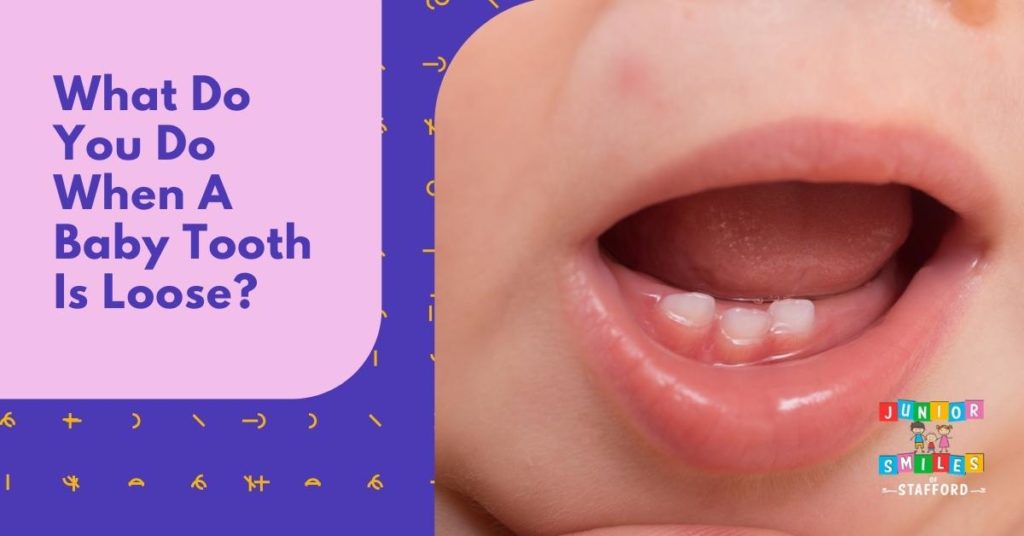What to Do When Your Child Has a Loose Tooth

Witnessing your child’s first loose tooth may be an exciting and fascinating milestone to navigate. A common question that parents often have is: “When does a child usually lose their first tooth?” Not least of all, how are you going to deal with this innovative dental breakthrough?
Learn all you need to know about loose teeth in children, from the common causes to practical tips on what to do if you find yourself in this situation (such as whether or not to take the tooth out at home and how to do so securely). Finally, we’ll address some of the most common concerns regarding loosened baby teeth, including when they usually fall out, if they can reattach themselves, and how to identify when a tooth is ready to be extracted. Along with your young one, you will soon be beginning the process of teething. Here are some helpful hints, insights, and a reassuring roadmap to help you handle this normal, yet occasionally confusing, phase of growing up.
When Do Kids Lose Their First Tooth?
By the time a kid reaches the age of six, the majority of their baby teeth, also known as primary teeth, will have begun to loosen and eventually fall out. However, being an individual, each child is special. Some people’s first tooth loss occurs as early as four years old, while others don’t happen until seven years old. The American Dental Association reports that the first baby tooth, often one of the lower central incisors, typically falls out between the ages of six and seven. Teeth usually fall out in the same sequence as they emerge. Until their replacement by permanent teeth, baby teeth often remain in their permanent positions. A permanent tooth may shift into place if a baby tooth is lost prematurely due to trauma or cavities. The crowding of permanent teeth might lead to their crooked eruption if this happens.
Why Children Get Loose Teeth
Like trees, our teeth have roots that anchor them in our jaws, which is why they remain in our mouths. Teeth often have lengthy, smooth roots. One root is typical for front teeth and three for rear teeth. A certain type of cell in our bodies will gradually erode tooth roots when the time comes. In preparation for the permanent tooth’s eventual eruption through the gums, the space created by the baby tooth’s root opens up as the jaw develops. Loss of a tooth’s bond with its root causes the baby teeth to loosen and eventually fall out.
How to Deal with Your Child’s Loose Tooth
The loosening of a baby tooth usually lasts for a week or two, and maybe much longer, before it finally falls out. So, your child has a loose tooth; what’s the best way to help them feel more at ease at this time? Take note of the following suggestions:
Reassure Your Child
The prospect of losing their first tooth could make your youngster feel apprehensive and scared. Put their minds at ease by assuring them that this is a natural and universal aspect of growing up. You should also mention that you lost all of your baby teeth, too. It might help them feel more at ease and secure when you acknowledge that you comprehend their struggles. There are also children’s books that might help calm their concerns about losing a tooth in an enjoyable and reassuring way.
Don’t Pull the Tooth
It’s best to wait until the tooth is really loose before attempting to extract it. At this point, most kids can remove a loose tooth by simply wiggling it out with their tongue. It may be too soon for the tooth to come out if it hurts to move it around. If you attempt to extract the tooth before it’s fully prepared to fall out, you risk doing harm to the gums, bleeding, and discomfort.
Cook Soft Foods
Some children will be overly enthusiastic and insist on continuing to eat hard, crunchy things in the hopes that they will loosen their teeth more quickly. However, a loose tooth can make chewing slightly uncomfortable or even painful for some children. While a child’s tooth is loose, it’s important to provide them with lots of soft things to consume. Smoothies, applesauce, yogurt, soft pasta, and fish are among foods that are simple to digest.
Continue Practicing Oral Routine
When your child’s tooth becomes loose, they may experience a unique sensation while brushing around it. However, it is crucial to maintain regular brushing in this specific area to ensure proper oral hygiene. At this stage, while the development of cavities may not be a primary concern, it remains crucial to prioritize the removal of plaque and bacteria from the tooth. This preventive measure is essential in safeguarding against potential gum disease and potential harm to the adjacent teeth.
How to Pull Out a Tooth at Home
If a tooth is exceedingly loose and ready to fall out, it may be necessary to extract it at home, especially a baby tooth. First, ensure the tooth is loose enough to be pulled without pain or force. If the tooth isn’t loose enough, let it loosen naturally. Wash your hands before removing the tooth to avoid infection. Use a clean finger or gauze to gently wiggle the tooth to check for looseness. When everything seems fine, grip the tooth with a clean tissue or gauze and slowly twist and remove. Be careful not to damage nearby gums. If your kid feels discomfort or resistance during the procedure, call your dentist. If there is any bleeding after extracting the tooth, wipe the area with a cold compress and water. If they are experiencing pain, swelling, or infection, see a dentist to have it professionally removed.
Loose Tooth in Children FAQs
Should you pull out a loose baby tooth?
When it comes to dealing with a child’s loose tooth, it is important to exercise caution and avoid attempting to forcefully remove it. It is generally recommended to allow a loose tooth to naturally fall out before attempting to remove it from a child’s mouth.
Can a loose baby tooth reattach itself?
Assuming your child’s oral health is good, a loosened tooth may usually reattach in a few days after a bump or impact. Once the gums have healed around the tooth’s crown, the root can once again be considered stable.
How long does it take for a child’s wobbly tooth to fall out?
There is no predetermined schedule for when this will happen. After the first wiggle, the tooth may not fall out for at least a few days. On the other hand, the affected tooth may not completely fall out for weeks.
How do you know if your child’s tooth is loose enough to come out?
When you gently wrap tissue around a tooth that is ready to come out, you should feel very little resistance. Once the root is completely dissolved, removing the tooth from the gums becomes a breeze. However, minimal discomfort and blood loss is expected.
Schedule a Visit With Junior Smiles Today
Being a first-time mother, coping with a loose tooth may be quite nerve-wracking. But keep in mind that you were a child once, too, and that reassuring your youngster is the best course of action. When the baby teeth fall out, it’s time for the permanent teeth to erupt. Now, more than ever, it is essential to enforce a stricter oral hygiene regimen in order to forestall future problems. Make an appointment with Junior Smiles, the premier children dentistry clinic in Stafford, VA, on a frequent basis to ensure your child’s optimal oral health. In the hands of their trained professionals, your child’s oral health will be adequately attended to.

